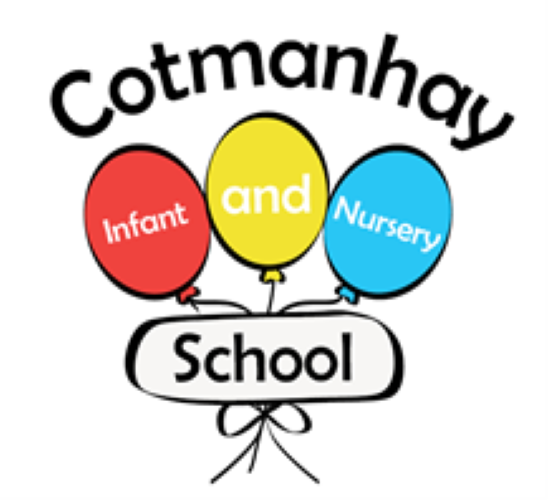English
🧍♀️ ENGLISH LEAD = MISS STALLARD
English Curriculum Overview
At Cotmanhay Infant and Nursery School we develop children’s abilities to listen, speak, read and write for a wide range of purposes. Children learn to use language to communicate ideas, views and feelings. This enables children to express themselves creatively and imaginatively both verbally and through the written word. We aim to share with children the joy of reading and to help them to become life-long enthusiastic readers able to access and enjoy stories, poetry and drama, as well as non-fiction and media texts.
Reading
Children are given daily opportunities to develop their reading skills.
Reading books are carefully matched to every child's ability with a strong focus on the use of phonics.
We use a range of reading schemes alongside a rich selection of 'real' books to broaden the children's reading experience.
We teach a daily phonics lesson through our systematic synthetic phonics scheme: Little Wandle Revised.
Reading occurs several times a week and includes structured guided reading sessions using a book closely matched to the children's phonic ability, one-to-one reading sessions with an adult, regular reading opportunities linked to our termly topics for research and enjoyment and a daily story time in every class.
At Cotmanhay Infant and Nursery School we encourage a love of reading through a well resourced library, special events, themed days, author visits, visits from the local library, book fairs and story club.
Writing
As children enter our Cubs Nursery for 2 year olds, there are writing opportunities in all areas of learning. These run seamlessly through into Key Stage one. Children apply the skills they have been taught in all areas of the curriculum. Children are taught how to plan and evaluate their writing.
Writing takes place in many forms - through word and sentence level activities, independently, modelled, shared, guided and paired. Children notice that writing requires an awareness of audience, purpose and context. Technology is used to engage pupils and give a purpose to their writing.
Children experience many writing opportunities throughout the week including handwriting, dictation, writing linked to learning in our topics, independent writing and extended writing.
Handwriting
In the Foundation Stage children develop many pre-writing skills. Correct letter formation is taught in a variety of enjoyable ways. As they become able, children begin to write letters using a variety of materials. Children are taught how to hold their pencil correctly. Children learn to regulate the size of letters which leads to neatly presented work. Letter formation is taught alongside learning the letter sounds in the order set out in Little Wandle. When children are ready they are taught to join letters following the Penpals scheme.
Spoken language
At Cotmanhay Infant and Nursery School we recognise that good spoken language skills are crucial and every opportunity is taken to develop good speech and language skills throughout school to enable our children to be confident, creative and successful communicators.
Throughout the year we run many interventions to support children who need extra help to develop good spoken language including Talk Time, ECAT, NELI and Speech Link.
Experienced, trained TAs deliver specific and individualised programs of support (set by the Speech and Language Therapist) for children who experience Speech and Language difficulties.
Teachers have received Word Aware training to better enable staff to develop children’s vocabulary and expressive language. We place a strong emphasis on broadening the children’s vocabulary and all year bands have a bank of key words to hear, understand and use which link to termly topics. These words are displayed in class and sent home with the termly information letter about what we will be learning.
Phonics
We have a whole page dedicated to the teaching and learning of phonics in our school. Please click on the link below to access our phonics page.

